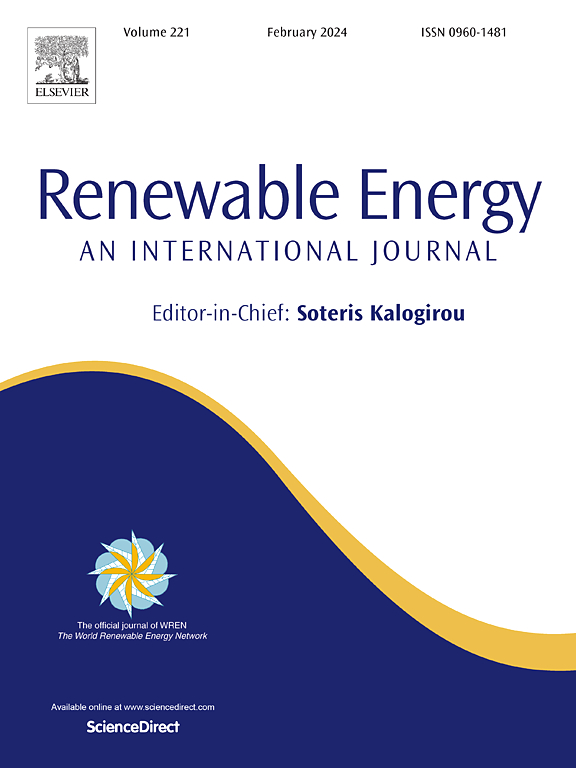Adaptation of maximum power point tracking controller for damaged wind turbines
IF 9.1
1区 工程技术
Q1 ENERGY & FUELS
引用次数: 0
Abstract
Wind energy is essential for sustainable energy production, but its growth faces challenges. Wind turbines endure harsh conditions, such as rain, ice, dust, and sea spray, causing erosion and degrading aerodynamics. In this study, we address the relevant issue of leading-edge blade erosion. Initially, the power loss due to erosion will be quantified, considering three severity levels. Subsequently, a controller tuning strategy will be implemented to mitigate these losses during operation. Numerous design load cases (DLCs), each with different seeds, are necessary to achieve statistical significance. Therefore, it was decided to integrate the OpenFAST medium-fidelity software with high-fidelity CFD simulations to characterize erosion and quantify its effects. An initial evaluation of the aerodynamic coefficient maps was performed for the different levels of erosion. Subsequently, the potential gain was quantified by tuning the control strategy. Two sites were selected for the calculation of the Annual Energy Production (AEP) with medium-low wind speeds. Furthermore, a gain scheduling strategy that varies according to erosion and wind speed was considered, achieving positive results and an increase in AEP of up to 0.7% in the most severe case. This was achieved without any modifications to the turbine, but exclusively by acting on the existing controller.
受损风力发电机最大功率点跟踪控制器的自适应
风能对可持续能源生产至关重要,但其增长面临挑战。风力涡轮机承受恶劣的条件,如雨、冰、灰尘和海浪,造成侵蚀和降低空气动力学。在这项研究中,我们解决了前缘叶片侵蚀的相关问题。最初,由于侵蚀造成的功率损失将被量化,考虑到三个严重级别。随后,将实施控制器调谐策略以减轻运行期间的这些损失。许多设计负载案例(dlc),每个都有不同的种子,是实现统计显著性所必需的。因此,决定将OpenFAST中保真度软件与高保真度CFD模拟相结合,以表征侵蚀并量化其影响。对不同侵蚀程度的空气动力系数图进行了初步评估。随后,通过调整控制策略对潜在增益进行量化。选取了两个中低风速场址进行年发电量(AEP)计算。此外,考虑了根据侵蚀和风速变化的增益调度策略,取得了积极的结果,在最严重的情况下,AEP增加了0.7%。这是在没有对涡轮机进行任何修改的情况下实现的,而是完全通过对现有控制器进行操作。
本文章由计算机程序翻译,如有差异,请以英文原文为准。
求助全文
约1分钟内获得全文
求助全文
来源期刊

Renewable Energy
工程技术-能源与燃料
CiteScore
18.40
自引率
9.20%
发文量
1955
审稿时长
6.6 months
期刊介绍:
Renewable Energy journal is dedicated to advancing knowledge and disseminating insights on various topics and technologies within renewable energy systems and components. Our mission is to support researchers, engineers, economists, manufacturers, NGOs, associations, and societies in staying updated on new developments in their respective fields and applying alternative energy solutions to current practices.
As an international, multidisciplinary journal in renewable energy engineering and research, we strive to be a premier peer-reviewed platform and a trusted source of original research and reviews in the field of renewable energy. Join us in our endeavor to drive innovation and progress in sustainable energy solutions.
 求助内容:
求助内容: 应助结果提醒方式:
应助结果提醒方式:


